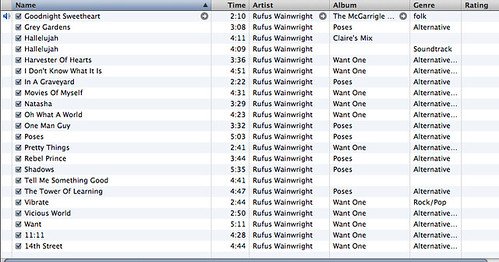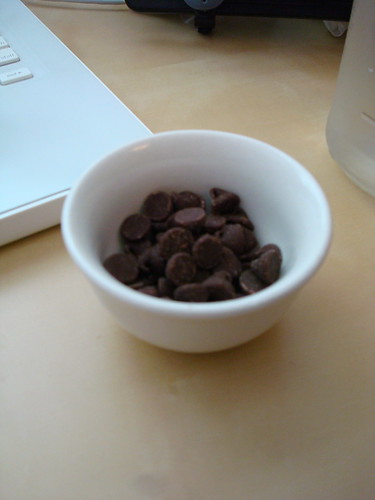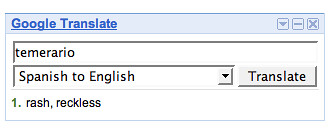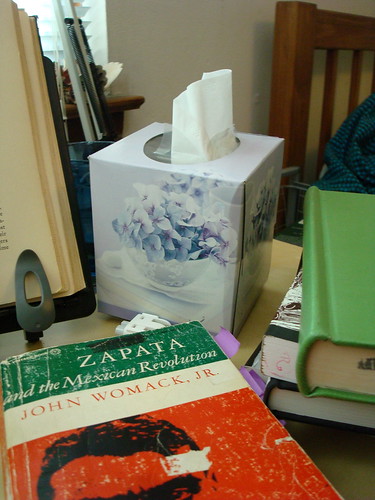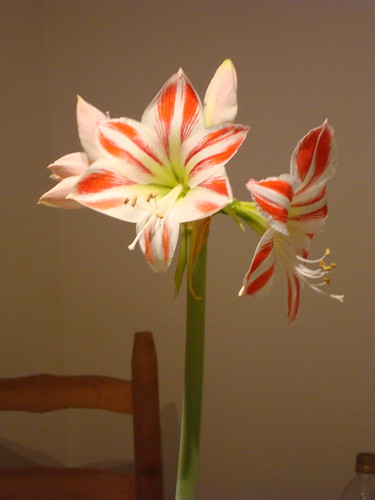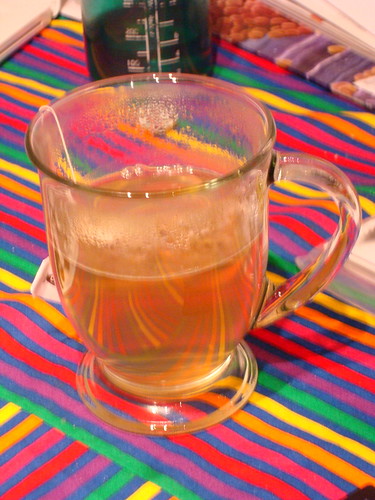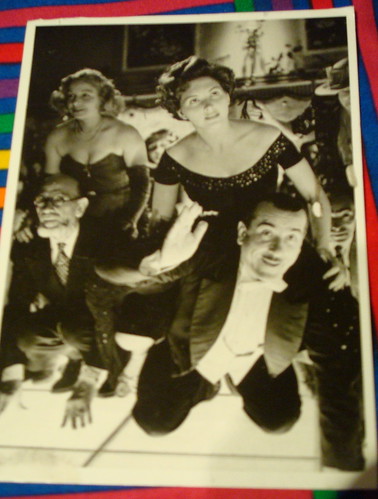Wednesday, August 27, 2008
Queridos amigos y familia,
Our last week and a bit in Nahuala went by in a whirl. We spent the final weekend on a class trip that took us to a number of different K’iche’ speaking areas – Santa Maria del Quiche, Chichicastenango, Zacualpa, Santa Maria Chiquimula, and Totonicapan, as well as few other stops along the way. Most of the places we visited were former field sites of our professors, and so we were able to participate in some intriguing discussions with their colleagues and friends from years past. Aside from the brief visit I made with a few friends to a hotel that had played a major role in my seminar paper from last year (the Mayan Inn in Chichicastenango, the first hotel in the Highlands), the highlight of the trip for me was the night we spent in a monastery in Zacualpa. While it was not exactly a cheery stay – the monastery had been taken over by the military during the 1980s and used as a torture camp – the tour and talk we were given by the Mother Superior about the church’s efforts to collect stories, identify bodies, and work with the community to recover from the horrors of those years really brought home many of the books I’ve read about Guatemala and the lectures we had previously heard. While the stay ended in us getting an angry phone call from the same Mother Superior for having absconded with the keys to the dormitory and one of our professors having to take a long drive back to return them, it will definitely stay with me as a thought-provoking and heart-wrenching visit.
On our return to Nahuala, we were treated to a week of good bye parties with our families and the community (as well as a final exam, of course). Thursday evening was the big fiesta, with each of us giving a brief thank you speech in K’iche’, accompanied by many longer speeches from teachers and family members, as well as traditional dancing by school children of all ages. While we did not get to see the chicken sacrificing dance that a few people in the course had seen at other times with their families, we did get dragged down to the dance floor to do our best to keep up with the high schoolers and five year olds. As our families had dressed us all up in their finest clothes, we must have been quite a sight! Someone managed to get it all on tape, I believe, so hopefully we’ll all get a copy to remember it by. It was a beautiful (the huipils the women were wearing were incredible works of art) and fun way to say thank you to the community and celebrate the time we’d spent together, even if it was followed the next morning by sad good byes.
As I had a week to spare before my mom arrived, I took some time to unwind and say goodbye to my classmates in Antigua, taking hot showers, doing a bit of shopping, and eating lots of dessert. I then caught a ride with one of my professors up to Coban (not to be confused with Copan, Honduras, where the ruins are – this one is smack in the middle of Guatemala’s cloud forest and coffee country) where I enjoyed a couple days by myself, meeting people in my hostel and visiting the natural pools at Semuc Champey and seeing the bats fly out of the Lanquin Caves at sunset. Of all the places I’ve been on this trip, Semuc Champey, and all of Coban, for that matter, rate as some of the most naturally beautiful. The pools at Semuc Champey are created as a river goes below ground for some 300 meters, resulting in astonishing and terrifying white water at the entrance and exit and gloriously clear water, calm swimming pools on the surface above. I met some very nice people on the tour and we enjoyed our long luxurious swim thoroughly – it was my first chance to get some summer weather (though it still rained a bit) and swimming in since Morocco! I wished my dad had been there for the Lanquin Caves as we managed to make it back to the entrance just as the thousands of bats that live there came swooping out. I’ve been raised to love bats and the experience of standing in the middle of that swarm with the knowledge there was no chance of me getting hit was something I doubt I’ll have again.
I made my way back to Antigua in time to say farewell to another batch of classmates and hello to mom, who arrived so early that she managed to get to meet a few of them before they headed to the airport. After spending a relaxing day and night in Antigua, we traveled up to Xela by shuttle bus on Saturday, where we basically ate, wrapped presents, and crashed in order to be ready to head back to meet my family in Nahuala on Sunday. Both my real mom and my host mom were overjoyed to meet each other and my host family prepared us a lovely lunch of fried chicken and wandered with us through the market before it was time to say goodbye (again). While the language barriers caused some confusion – my real mom’s Spanish is decent but rusty and my host mom’s about the same – we were able to share a nice afternoon together, buy a few huipils, and give my host sisters and mom some fun things from home as thank you presents. I do hope I’ll make it back to see them again and, if nothing else, am extremely grateful for the time I got to spend with them.
From Nahuala/Xela we headed up into Chiapas on an all day shuttle that left us both exhausted but so happy to make it to San Cristobal. For me, it was wonderful to be back in a city I fell in love with two years ago, and the chance to show it to my mom, who had never been there before, made it all the better. We spent our four days there wandering through markets and museums and revisiting a lot of the places that had stuck in my memory. I was happy to find that I had not mis-remembered it and cannot wait to go back in the future for a longer period of time as my studies call for it. Happily for me, I was also able to meet with two historians who are incredibly knowledgeable about the work that has been done on Chiapas and the resources available, and they were both very encouraging and enthusiastic about my areas of interest and potential projects. Hurrah for an academic future!
From there we headed on an overnight bus to Mazunte on the Pacific coast of Oaxaca. Three days of sun-soaked beach time were very much called for, at least for me after a summer of freezing in Nahuala. While we didn’t manage to meet up with a friend of mine who was only a few towns away, we enjoyed our seafood and sea-bathing very much. Mom brought along a book of New York Times Sunday crosswords that we’ve been zooming through and each of us managed to get some good light reading in as well. There is little that feels as good to me as swimming in the ocean and Mazunte was one of the most tranquil and refreshing places I’ve managed to do it (aside from the slight sun burn, mosquito bites, and lack of fans). If anyone has an opportunity to go, I’d definitely encourage it – it’s a little out of the way (extra strength Dramamine is a wonderful thing), but that only makes it more peaceful.
We’re now spending our final days in Oaxaca City, the beautiful capital of Oaxaca State that reminds mom and me of the Mediterranean (without the sea), New Orleans, and La Jolla. It’s a city full of artists old and new, wonderful old churches, gorgeous architecture, quality museums, and a lot of good food. As in Chiapas, the artesanias are of the highest caliber, especially the rugs and pottery here. Today we took a five hour tour to a number of places outside the city – a giant tree (supposedly the widest in the world) called El Tule; a family run rug weaving business where we had the entire process from carding to dying to spinning, pattern making, and weaving demonstrated to us; a mescal (a type of liquor made from the agave cactus and similar to tequila, though stronger) distillery; and the ruins at Mitla, a later Zapotec site where, unlike many other sites, the buildings still standing haven’t had to be reconstructed as the town was never fully abandoned. Over 800 years old, the palaces at Mitla have withstood large earthquakes thanks to the unique architectural techniques that also resulted in intricate decorations on the sides of the buildings, precise geometric patterns that almost look like weaving. While nature has taken its toll on most ancient Mesoamerican cities, at Mitla, the destruction has primarily been caused by humans taking stones to build new structures. Luckily there’s enough left to get an idea of how beautiful the city must have been centuries ago.
We’re headed back to California day after tomorrow and there are so many more things I want to see that I guess I’ll just have to plan a return trip to this part of the world for the coming years. Though I suppose I’d have to any ways, seeing as this is where my school work will be bringing me! Hurrah! Mom and I have managed to fill a few bags with things to decorate my new apartment and the few remaining open spots on our walls at home. It all gets overwhelming after a while, but most of the places we’ve been have had plenty of cafes to kick back in with a beer or a limonada and a book and just take in the world around us. I can’t believe that it’s been two months since I’ve been in the States, but I suppose school and work call us homeward. I hope summer has treated you all well and look forward to seeing you in the coming days, weeks, or months!
Abrazos fuertes,
Loq’alaj iwonojel (dear all y’all),
Most days continue to go as I wrote last time, and while they are very full, there really isn’t that much new to report on the Nahuala front. I helped my host family make chuchitos this week and was definitely more successful than my last tortilla attempts. Chuchitos are one of the various Guatemalan forms of tamales and are made with pieces of beef in pepían (a tomato and pumpkin seed sauce), as opposed to tamalitos – the plain masa pillows eaten as an alternative to tortillas – or the chicken filled ones whose name I’ve forgotten. Before we started, my sisters handed me an apron to tie on over my skirt, a very smart first step, though I still managed to get pepían all over myself. Seeing as mom and I make tamales every Christmas, I thought I’d have a better handle on how this process worked, but sadly, my experience served little purpose.
Rather than squishing out a flat bit of masa on a counter, putting filling in the middle, and wrapping the whole thing up with corn husks and string, chuchitos are made by making a larger version of a tortilla (sigh, though my bigger hands helped), placing a single piece of meat and some sauce in the middle, and then quickly folding the circle in half and pinching the edges together. While my tortilla making skills have improved, it was in the folding and not getting sauce everywhere step that I generally failed, resulting in a very messy apron (my host sisters’ remained clean) and chuchitos that often had more sauce on the wrapping than inside. Instead of corn husks, the chuchitos are wrapped in banana leaves or leaves from the corn stalk, folded over many times instead of tied. By my fifth or sixth attempt, I was doing okay, but I probably only made half as many as my sisters and it was definitely possible to tell which chuchitos were mine when we were eating. They all tasted wonderful, but mine were nowhere near as nice to look at. They were still proud of me, though, and the sisters made sure to include me in the “we made a good dinner tonight” comment. As chuchitos aren’t an every day food in my family, it was a special venture overall, and was topped off with chocolate con arroz (hot chocolate with rice), one of my favorite drinks here, making for a wonderful dinner.
Otherwise, I’ve been enjoying my weekend adventures to various parts of the country. After our trip to Xela, I spent the next weekend in Antigua and Guatemala City visiting my friend Amanda, another history PhD student from the University of Chicago. She is beginning to prepare her dissertation proposal and, as always, we had plenty to talk about relating to the history department and our program, and especially to the adventure that is doing historical research in Guatemala. As I have yet to really explore any of the archives here, she was incredibly helpful in orienting me to the basics of how the different places work, how best to approach their curators, and what I might expect to find. As I’ve spent my time in Guatemala thus far surrounded by anthropologists and linguists, it was wonderful to talk to another historian who understands the difficulty of getting at information about the country from before 1960 and who is now going through all the trials and tribulations I’ll be putting myself through in the coming years. We treated ourselves to good food, good showers, and leisurely wanders through Antigua, followed by a slightly less relaxing if perhaps more productive stint in Guatemala City. As we only get Friday afternoon to Sunday afternoon free and Nahuala is 3ish hours from either place, I felt rather lucky to get a ride both ways from one of our professors – Sergio - who is originally from Guatemala City and was visiting his parents and doing some work in the city that weekend. Much more comfortable, if slightly less adventurous than taking a chicken bus, the ride also included an obligatory stop for hot chocolate and pie at a place he always always visits on his drive. Well worth it, too.
Last weekend, four of us bummed a ride to Antigua from Sergio (again), and after a nice dinner with another of my friends – Caroline, from Harvard, who is studying Spanish for a few weeks here –, we turned in rather early in order to catch a 4am shuttle to Copán, Honduras. While the shuttle ride was somewhat unpleasant due to the other occupants, more traffic than expected, and numerous delays related to missed bus connections and a too-long breakfast stop at a mediocre resident, we made it to the town of Copán Ruinas by noon. Copán is only 20 minutes or so from the Guatemala-Honduras border, and is one of the better known classical Maya sights, renowned for the incredible quality of its sculpture. Apparently we arrived at the same time as a tropical depression that resulted in torrential rain, but as we only had Saturday to see everything (we had to leave early Sunday in order to get back in time for dinner with our families), we ventured out nonetheless. Us three girls had umbrellas (they only did minimal good), but Derek stuck it out without, at one point resorting to pulling off his t-shirt and wringing it our, as much good as that did. And while us girls had managed to stay damp rather than sopping, our tuk-tuk ride back to the hostel made that irrelevant, and we all looked like we’d just jumped in a swimming pool when we arrived. Hoping to avoid another soaking, we spent the rest of the evening in a restaurant playing Euchre, eating brownies and pasta, and drinking beer.
Copán was worth it, though, as the things that have been uncovered are incredibly beautiful. Luckily for us, the site has as a spectacular museum that contains many of the nicest pieces (originals, and a few replicas) that have been found. Intricate hieroglyphs, wonderful relief sculptures animals – bats, macaws, frogs –, as well as restored facades of buildings complete with representations of kings, queens, scribes, and gods. The detail worked into many of these images is unbelievable and I only hope that the photos I took do it justice. Robin, one of the other students who came, is working on glyphs in school, and Copán especially, and so she was able to elucidate much of what we were looking at much better than any of our guidebooks. The rain let up a bit as we finished the museum, so we headed out into the ruins themselves, only to find ourselves again subject to downpour. Throwing up our hands, we continued on our way, clambering over steep sets of stairs on the sides of partially reconstructed pyramids, splashing through puddles in order to see the dancing jaguars carved into the side of one building, and, according to level of commitment, braving rushing streams to get a better look at stellae.
Another unique feature of Copán are the archeological tunnels that have been stabilized and opened up to the public, allowing people to see the still intact “Rosalia” temple that was found buried under another, more recent construction. Though there’s a guard at the entrance and the whole thing is relatively well lit and carefully blocked off in sections, it still feels pretty adventurous to go running around inside a pyramid, getting a close up look at what archeologists have been working on for the past decades. Because it was so thoroughly and carefully buried inside another building, the temple is very well preserved and little of the detail in the carvings has been worn away by weather and time. It was also, of course, another way to escape from the rain.
This weekend is a class trip to a number of K’iche’ speaking cities, each with its own dialect, and I’ll be sure to write about the experience some time soon. As this coming week will include a number of good bye parties and the like and once the program is over, I’m spending a week trying to get to Tikal and back, seeing the northeast of the country in the process, I’m not sure when I’ll write again. I should be able to post photos at that point, though, and I’ll be sure to send along links if nothing else (I actually don’t have many photos as taking photos of people without their permission is very culturally inappropriate, but my family has okayed some group portraits and I have weekend shots as well). After that, my mom is going to meet me in
Antigua and join me for the rest of my trip northwards, two weeks we plan to spend seeing some of the places she visited many years ago and exploring Chiapas and Oaxaca. I'm so excited that she'll be traveling with me, as it makes the prospect of traveling for another month much
more inviting!
Chab'ej chik (We'll talk soon)!
Xb’eq’ij! (Good afternoon, literally, the day has come!)
As those of you who tried to find Nahuala on the map may have noticed, my spelling last time is not the only one. Nahualha, Nahuala, and, in K’iche’, Nawalja’ are all apparently acceptable spellings, though I guess Nahuala is the most widely used. It’s not a town you’re going to find in many of the guidebooks – the Rough Guide to Guatemala mentions it in passing as a good market town but not a place to stay, as, according to them but not to us, the locals are hostile to outsiders and the local shamans are known for their black magic (hah). But via googlemaps or some such, look west of Lake Atitlan along the Pan-American Highway just a bit before it forks. Nawalja’ translates to something like “place of the water spirits” and there is a (now trash filled) river that runs through town and, according to some, is still home to the nawals/nahuals.
In the town center, the old adobe homes have been replaced by cement block buildings painted in white and various pastel shades. The market – Thursdays and Sundays – is held in front of the Cathedral and in the surrounding side streets. As it is the largest center for a ways around, the otherwise empty cobblestone and mud streets fill up with blue plastic tarp stalls under which an amazing variety of goods are to be found – beans and corn, shoes new and used, huipils and the blue cloth used to make skirts (cortes or uq’), cds and dvds, all manner of fruit, toiletry, and school supply, and who knows what else. I haven’t yet been here for a Sunday market, but I’m planning on staying at least one weekend to see what I can find. I suppose you’d say it’s much more “authentic” as few tourists come through; this means basically that the arts and crafts are sparser but probably more reasonably priced while the every day goods are much more diverse.
As to everyday Nahuala, most people in town are indigenous K’iche’ speakers; generally only men speak Spanish, though with expanded bilingual education, younger generations are more likely to be fluent as well. Men primarily wear Western style clothing – pants and shirts – though occasionally you’ll see an older man in the traditional koxtar (a vaguely kilt-like affair with small white shorts underneath) and kutin (a long-sleeved shirt in light colors); sometimes you even get a rather amusing mix of the two – koxtar with a brand name t-shirt and baseball cap. Women, except younger girls, continue to wear traditional traje – dark blue corte (skirt) tied with an embroidered faja and a huipil on top. While huipils continue to be identified with particular towns – there are a few styles native to Nahuala, mostly involving red or orange embroidery on a white or navy base – the trend recently has been to wear huipils from other parts of Guatemala, with different towns going in and out of style. As well, among younger women especially, the corte will often be worn with an American style shirt and sweater instead of the huipil. It all makes for a rather dazzling array of dress. My family has offered to dress me up many times, and as soon as I have photos, I’ll send them along. From those girls in our group who have been dressed up in traje, I’m dreading how tight my host sister will wrap my faja, as apparently in addition to keeping the corte up, it’s supposed to accentuate my waist and make me look guapa.
School starts around 8:30 every morning, meaning I leave home around 8, having woken up and eaten an early breakfast with my little “sister” and “niece” before they head to school at 7:30. Breakfast is generally around the wood stove in the kitchen area, where we are joined by the three family cats – Tigre, Q’eq (Black), and Missi Puss – who seem to enjoy a life of sitting together on one chair staring at the fire all day. Mike’l now trusts me to make it to school on my own every day, and as I walk, I greet everyone I pass with “Saqirik” (good morning) or “Jeba’” (roughly goodbye, though it’s also used as a greeting-in-passing). It’s very impolite to not say anything to those people you see, and if the person is older, a respectful “nan” or “tat” is also expected. Occasionally I’m questioned by older women as to where I’m going – this is their right – and one of the first phrases we were taught was “Kinb’e pa tijobal” (I’m going to school), as this is always an acceptable answer guaranteed to dispel any potential gossip.
Gossip is one of the biggest concerns of our professors and families, as “co-resident kin groups” (as they’re called by anthropologists) are very closed with information, and we don’t want to expose any of our host families to slander. Thus, we’re expected to be exceptionally polite, not spend too much time with any person of the opposite sex, and wear loose-fitting, non-revealing clothing. Pants haven’t proven to be a problem (though we were warned to be careful with them), but we’ve all put away any skirts that reveal anything above mid-calf and keep our shoulders well covered. As it’s pretty chilly, this has been relatively easy so far. Fashion has mostly gone out the window – as expected – and we’re all sure to come away from this summer with some amusing photos of very bundled up and mismatched friends.
Nahuala is very hilly, and we all go up and down many slopes on our way to school. We pass numerous churches – the central Cathedral as well as a growing number of evangelical churches –, corn fields with cows and goats grazing on the edges, local schools, and the seemingly never ending expansion projects on the Pan-American Highway. Most people are friendly and encouraging of our K’iche’ greetings, though the smaller kids generally laugh and point and sometimes older folks join in, especially if someone is dressed up in traje. Tuc-tucs – the three-wheeled, vaguely golf cart looking vehicles that have become the taxis of Guatemala – often pass and offer us rides if they’re not already occupied, but I think we’re all determined to conquer the altitude and long steep hills and work off the carbohydrate-loaded meals we eat, and so we decline.
By the time we reach school – as we’re all going at the same time, we usually find each other on the road – we’re all ready for the real coffee we’ve imported from Panajachel, bought from a rather obsessed American who worked as a coffee bean buyer for many years before setting up shop in Panajachel. Guatemalans don’t drink coffee American style, but rather prepare a very weak brew from NesCafe, and so we’re all very grateful to our teachers for having splurged on these excellent beans (organic and free trade, of course). I’m not the biggest coffee drinker at home, but after this summer I think I’ll have joined the ranks as the caffeine deprivation headaches I’m going to have if I try and quit will be hell. Class lasts til about noon, when we break for a long lunch prepared by a local family and carried up to the school in baskets on women’s heads. Then it’s a few hours of homework and one-on-one/two-on-one conversation with our local teachers, occasional lectures, and we head back to town to find the internet, drink something warm in the center, or return home.
Evenings at home mostly center around me practicing what I’ve learned that day, trying to figure out what the family is saying while gathered in the kitchen to make and eat dinner (sometimes we eat in the “dining room,” but everyone seems more comfortable around the kitchen fire), and, if it’s a Tuesday or Thursday, bathing in the tuj. While most of the other host families have a shower, mine has yet to install one, and so I get to clean up in the traditional temascal (Spanish for tuj). Essentially, this is a one-person sauna with one large bucket of very hot water and one of cold water that the bather mixes in a smaller tub before using another, even smaller, bucket to dump the water over him or herself. Generally lit with just a candle, the tuj has a wooden bench to sit on while bathing, and is big enough that, as one of my friends put it, many children are conceived in there. This fact often leads to lots of joking about going in the tuj with another person, but despite much such laughing at my expense, I have yet to be intruded upon. Apparently people occasionally do pass out from the heat, so my sisters will call in to make sure I’m still conscious and have enough water. I’m a big fan of the tuj, especially on the colder days, and knowing that I’ll have showers at hostels on weekends, I have no complaints that it’s my only way to stay clean. My host family doesn’t believe me when I tell them that the U.S. equivalent is rather a luxury or that other students are jealous that I get to tuj on a regular basis while they just have showers. It may not be the easiest way to bathe, but I always come out feeling very clean, relaxed, and ready for bed.
My family must think that gringos are unusually sleepy, as I’m generally in bed by 8:30, directly after dinner, but having to think in three languages all day is exhausting and I’m pretty hopeless for anything but writing in my journal and reading any time past 8, let alone 9. With a large pile of wool blankets and my down sleeping bag, I manage to stay toasty at night, and, despite the chorus of dogs that lasts late into the night, I’m getting much more sleep here than I’m used to and thoroughly enjoying it.
Maybe next time I write I’ll have more travels to report, but for now, chichijij iwib’ (take care of yourselves) and chixki’kotoq (be happy)!
Saqarik friends and family!
In any case, like I said, I’ve been in Guatemala for almost two weeks, having arrived a few days late due to some hiccups during a trip to Morocco to reunite with a number of my college friends. The first week of classes – the K’iche’ (means “many trees”) program is being run jointly through University of Chicago and Vanderbilt – was spent in Panajachel, a rather touristy town about 2.5 hrs outside of Guatemala City on Lake Atitlan. Panajachel is mostly composed of restaurants, hotels, coffee shops, and places to buy any sort of artesanias you might associate with Guatemala. The program put us up at a very nice hotel complete with conference rooms, a pool, and a nice restaurant that fed us breakfast and lunch every day. We spent our days alternating between crash course K’iche’ lessons to prep us for living with families that speak very little Spanish and cultural lectures from our professors to orient us to our surroundings.
There are 12 students in the program and three professors; most people are linguists or anthropologists, and we’ve been split into an intro class (people from all over) and an intermediate class (students mostly from Vanderbilt who have been studying the language for the last year or so). Mostly it’s grad students who have traveled in Latin America before, but there are a couple people who have little experience with rural life and who are discovering all the quirks and delights of living out here for the first time. Everyone brings a different background and different interests to the program, making for a wonderful diversity of knowledge and a great opportunity to share insights and information. It was great to have a first week with relative creature comforts in Panajachel to get to know each other and figure out the basics of the language before heading out to our home stays, but I think we all knew that our language skills weren’t really going to improve until we got to Nahaulha and our temporary families.
We arrived in Nahuala – the 8000 odd person seat of a 15,000 person municipality about an hour up into the highlands from Pana – on a Sunday afternoon in two “minibuses” or shuttles overflowing with too much luggage, supplies for the school, and some rather carsick students. After been greeted by Manuel (or Wel in K’iche’), the coordinator and host of the program in Nahuala, we were sent home with our families to unpack and settle in. I’m living near the center of town with an extended family of mostly daughters, only one of whom speaks much Spanish. My host mom and dad – nan To’n and tat Mikel – are both weavers, though because tat Mikel has been sick since I’ve arrived, I haven’t seen much of either of them. Rather, I spend most of my time with the daughters: Mari’y (Maria) is the oldest and married to Wel (not the same as our coordinator), and they have a daughter named To’n (Antonia) who is 5 or 6; Kla’r (Clara) is the next oldest and she and Mike’l (Michaela) seem to do most of the housework; the youngest is Xe’p (Isabella), who is probably 14 or so and still in school.
Mike’l is the daughter who speaks Spanish and has become my translator/guide to Nahualha and my family. She’s about my age and actually a very good teacher – before she’ll tell me what anything anyone has said means, she makes me repeat it in K’iche’, laughs and helps me with my pronunciation, and then translates for me. In return, I give her some English words and attempt to help around the house a bit. This is mostly futile – my tortillas (the mainstay of all meals) are still pretty pathetic and the sisters mostly relegate me to the corner of the kitchen nearest the fire/stove to stay warm and entertain them. Unlike Chiapas, we get more than beans, tortillas, and weak coffee here, but those still form the basic food groups of my family. Add in eggs, noodles, various kinds of meat (including some small, very bony fish that pretty much silenced everyone at dinner as we tried to extract all the bones before choking on them), bread (kaxlan waj or “Spanish food”) and fruit, and you’ve got my diet at home. We’re fed a pretty big lunch at school everyday, so no one is complaining about lack of food, though some of the other students have had to try some things – cow stomach and other intestines, mostly – that haven’t been terribly appetizing.
Our school is in one of the many buildings constructed with remittances around town that remain mostly empty, waiting for brothers in the States to come home and fill them (this is the case in my family as well – the only brother has been in New York for 12 years now and I’m the only one living in the very well built and very empty part of the family compound built with the money he’s sent home). It’s in one of the cantones (vaguely suburbs or hamlets), about a half hour walk mostly uphill from our homestays. Of course, it’s in the coldest part of Nahualha and none of us really came prepared for the rainy season in highland Guatemala. We spend most of the day in class, half of it with our American professors going over grammar and half of it doing one on one or two on one with local native speakers to practice pronunciation and conversational skills.
K’iche’ is my first non-European language and is rather like a puzzle much of the time. There are some sounds that we don’t have in English and plenty of glottal stops that can make all the difference between saying “youngest child” and “shit” (apparently one of my friend’s host families got a very good laugh out of this while she was trying to do her homework with them one night; she didn’t realize she’d been calling the youngest kid a little shit until a few days later). We’re all having a pretty good time with it, though, and none of us are above laughing at ourselves when we trip over our k’s and q’s. Hearing the language all the time at home is definitely helpful, and though I still don’t understand the majority of what’s being said, I catch more grammatical constructions and vocabulary words every day. I’m still pretty limited to declarative sentences and basic questions, but my family has no problem with these and with giving me more words to expand what I can say. I often know they’re talking about me even if I can’t tell what they’re saying, but I just practice my grammar in my head and nod and smile. I’m sure that in the next few weeks things will just keep getting better!
Right now I’m in Xelaju (also known as Quetzaltenango, but all the cool kids call it Xela) with most of the other beginning students, enjoying our weekend off. We’ve all been filling up on Italian food, French toast, and lattes and buying ourselves warm clothes from the used American clothing stores – I found a giant Old Navy fleece and some new leg warmers that are going to make all the difference in the coming weeks. It’s not hard to get from Nahualha to other places around the highlands – we just stand out on the Pan American highway and hail any of the old school buses (foreigners call them chicken buses) passing by that happen to be going where we’re headed. Most are covered in religious decals and painted bright colors and they blast pop music or evangelical songs as they rush past. It’s an occasionally nauseating and sometimes terrifying but always amusing way to travel. I don’t think there are as many actual chickens on the buses as there used to be, but they’re great for people watching. We’re not sure where we’re headed in the coming weeks, but I’ll send another email when I get the chance!
I hope you’re all enjoying your summers and if you’re going to be anywhere in Guatemala in July or southern Mexico in August, let me know and we can try to meet up! I’ll be flying out from Cancun at the end of August and probably taking a few days beforehand to enjoy the sun and sand on an island called Isla Mujeres off the coast, so if anyone wants to join me, I’d love the company!
Ki’nloq’oj (love you all!)
summer posts in order
Thursday, June 5, 2008
remiss
but since i promised them, here are some photos from home and kinetics. home was a much needed recharge, though that charge, like the battery charge on my computer, seems to drain more quickly than it used to. much more quickly. i just have to remind myself: in one week i will be installed on a beach in morocco with my favorite friends from college. with nothing to worry about.
for more information on kinetics and some context for the photos below, please see here
and here

hippypotomus (mouth opened, ears wiggled, smoke came out of nostrils)
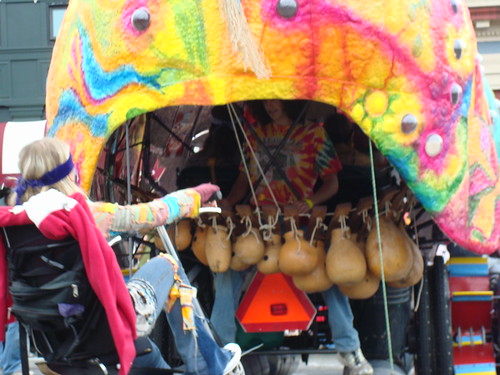
it's marimba filled derriere
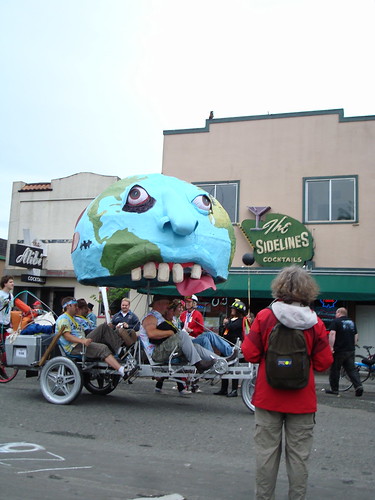
one sick mutha' (it spun)

robosnail - very elegant snail (one of three gastropod mollusks competing this year)

not a cop car. rather, not a cop car with its insides intact, but instead the counterfeit bluesmobile powered by pedals.

the lead elephant in melvin's carousel (it played calliope music and spritzed water from its trunk)

mechanical chicken (best posse, photos to come later)

biking vikings (can you spot the muffin tins? pie pans? fridge coils?)
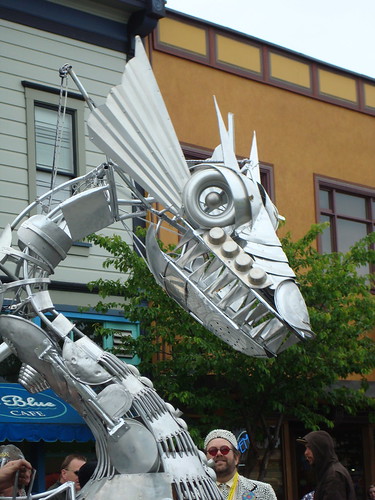
look at that character!
photos of folks to come later.
Saturday, May 24, 2008
home
now i am home, in arcata, happy as a clam. kinetics today and through the weekend (expect photos), much good food, and, well, relaxed. may or may not write.
happy long weekend!
Monday, May 19, 2008
paper writing
Saturday, May 17, 2008
Hurrah!
anywho
graduation!
grown up!
wahoo!
hope they're having the loveliest of celebratory times!
Thursday, May 15, 2008
a spring time walk
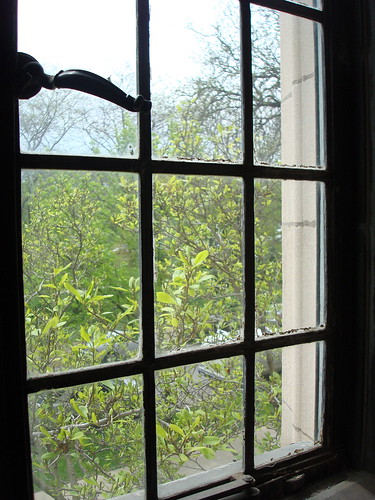
from my window at work, gazing longingly out at the sunshine through the (now flowerless) magnolia

and off i go!
outside the social sciences research building, bikes locked to the flowering trees (i don't know what they are, but these beautiful pink things are everywhere)
not that there aren't plentiful bike racks, but some have decided the pink trees are better, slender as they are

moving away from the ssr building in all its gothic glory. no ivy on this one, but i will take a photo of the broader courtyard, where the unfurling leaves are a glorious shade of green that are slowly overcoming windows and the carved faces of muses and scholars
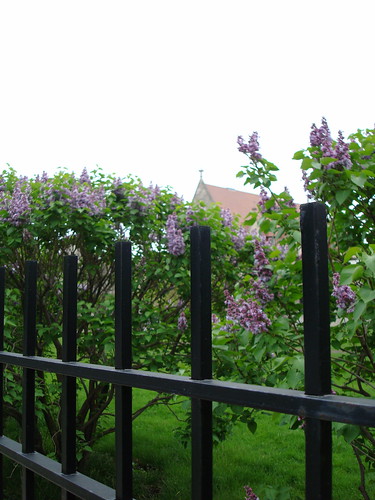
traipsing past the lab school, with its fragrant rows of lilac bushes that i can only just resist running my hands through or plucking blossoms off of (secret: i pinched a few flowers and held them up to my nose for much of the walk). don't you wish your elementary school had lilac bushes to hide in?

past this effervescent and enthusiastic shared garden on kendall (or dorchester?) - both are overwhelmed with shades of green and flowers at the moment and make me smile
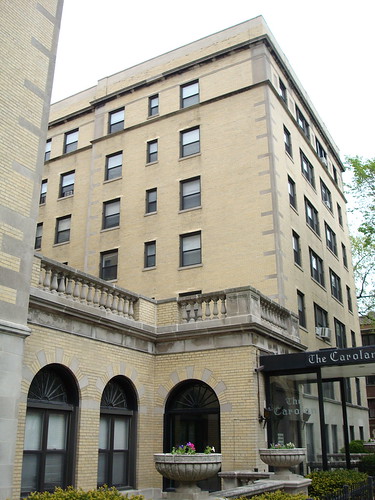
to my new building! as of september, i will be living on the top floor of this lovely old luxury resort, in a wonderfully spacious one bedroom with a view out over the lake. i cannot wait to make it mine.
(inspired more than a little by eurolush)
Monday, May 12, 2008
senses
helps that it came with an intense portrait:

really, though, it's an incredibly intriguing portrait of an artist losing that which drives his art, namely, in this case, a chef losing his sense of taste via tongue cancer.
chefs fascinate me. food fascinates me. the food described in this article is, well, a little too avant garde for my tastes, i believe. i mean, i'd love to try it if someone else was paying for the violet white chocolate and olive coated strawberries. or the four course menu described:
"The meal was almost comically elaborate, involving twenty-four courses and costing three hundred and seventy-five dollars, with wine. The food starts off at the savory end of the spectrum, and slowly turns sweeter, concluding with coffee, in the form of crystallized candy. Most items could be eaten in a bite or two, but the procession took four and a half hours. I had liquefied caramel popcorn in a shot glass, and a bean dish that came on a tray with a pillow full of nutmeg-scented air. The plate of beans was placed atop the pillow, forcing the aroma out. I sampled a “honey bush tea foam cascading over vanilla-scented brioche pudding,” in the words of the young man who brought it. There was also a dish centering on a cranberry that had been puréed and then re-formed into its original shape. The berry was then prepared on a device called the Antigriddle, which Achatz had helped design. The Antigriddle froze the bottom of the berry but left the top soft."
exciting, yes. $375? nah... not for me.
but the photos of the food are beautiful

Gelled sweet potato, brown sugar, and bourbon, tempura-fried on a torched cinnamon stick.
 Dehydrated bacon wrapped in apple leather.
Dehydrated bacon wrapped in apple leather.
A cylinder of honeydew with vinegar, served in mint-infused gelatin.
i guess, go read the article. (and the one about genius which reminds me of the discussions about the difference between historical and scientific objectivity we've been having in my anthro of history class)
but things like this, that emphasize the importance of smell so much, make me wonder what doctors/scientists would make of my mom. or my aunt for that matter. neither of them have a sense of smell. yet they're both incredible cooks. but if, as this article says, apples and onions taste the same, how is that possible? i mean, my mom cannot smell anything - great for changing dirty diapers, not so great when she talks about wanting to have a perfume - but somehow she can make a mole poblano or a carefully spiced jambalaya to die for. and she knows when things taste bad. when the spices are off.
apparently, the sense of smell is tied incredibly strongly to memory. i wonder if this has something to do with my mom's memory problems.
blindness, deafness - not as uncommon as we'd like them to be, but people cope. apparently, lacking a sense of taste makes eating uninteresting and can lead to people starving. and having no sense of touch, well, people experience that in patches, but being completely without? i can't fathom it. comparatively, having no sense of smell is easy, livable. still, it would be good to know why she doesn't have it. she never has. her sister lost it after an illness as a child. i think her mother also didn't have it. not sure though.
Friday, May 9, 2008
yesterday/today
i spent yesterday shaky and freezing, exhausted, with stomach pains and an inability to focus. i had to give a presentation, appear knowledgeable about countries i have never studied before and theories i'm only starting to get comfortable with, even if i don't really agree. i almost started crying throughout the day multiple times. i don't like this fear.
i talked to my mom and dad last night. mom talked to jody on the phone yesterday and said she sounds optimistic and in fighting spirits. we're all supposed to start making her hats, as she will not wear a wig. they're flying her to san francisco (ucsf) instead of portland - it's minimally closer to home, she has family there, specialists are the best, etc. she'll pull through. that's all i can think.
it's all knocked out my own immune system, and i've managed to develop a sore throat/cold/feels on the way to a sinus infection over night. going to make this even more fun.
two weeks til i go home. i have to finish at least one paper before i leave, preferably more. one professor (the considerate, young one) has cut down our reading for the remaining weeks and decided to make our final a multiple-day take home rather than an 8-hour take home. i could kiss him.
that's life right now. i watched the past three episodes of brothers & sisters last night as i was in desperate need of a break. i do think that it's one of the best shows on right now.... and sally fields is a remarkable actress. that's that. we're all pushing through.
Wednesday, May 7, 2008
worry.
as much as over the years all the gymnastics girls have thanked our stars that we were not her real daughters, jody was a mother to us - we spent at least twelve hours a week with her, usually more, especially during competition season with those six hour drives, fourteen hour meet days, and nights spent in shared beds only to wake it up and do it over. she pushed us all, knew our weaknesses, knew our potential. when we stopped competing, she drew us into coaching and judging, choreographing and being models for the younger girls. she was controlling, she was manipulative, she discouraged us in any pursuits outside of gymnastics and pushed her daughters in impossible ways. but since graduating, we've all come back, stayed connected in some way or another to the team, whether continuing to judge, just dropping into practice, or what have you. and she's sick. so sick. none of us knows how sick. she probably doesn't know how sick.
for me, it's more than gymnastics. she's been a second mom since i was three; in elementary school i feel like i spent as much time at their house as at my own, playing ponies, accompanying jody on errands, listening to her tell me to go for more, that i was an old soul and had so much ahead of me. our families do all our holidays together, random dinners, massive card games. i always complain - i have nothing new to say to them, jody always comments on my weight, they laughed off my academic aspirations long ago and now it's just oh goody you get to travel lots! - but i always go. i can't ever tell how much my mom actually likes jody, but she's one of her only friends at home. and she must be terrified. both of them. all of them.
not knowing is the worst. i can't say they caught it early - i don't think they did - but perhaps the surgery will forestall things. chemo is a definite, but who knows where. they may turn into my family from six years ago - half a week at home, half a week at the hospital on rotating schedules. mariah's about to graduate, kirsten's just finishing her freshman year.
they're a family full of tensions, many centered around jody's pushiness, bossiness, stridency. as much as i've disliked her at times, i've never not admired her. she gets her way. she pushes those other coaches and judges around until they do what is right and what is fair. she started her own business and has made it very successful. she is incredibly strong, incredibly fit, and has the life that she's always wanted. and she's had it for years. she reads, she coaches, she teaches, she gardens, she runs her own life and that of her family. and being out of control of her own body must be hitting her hard. she'll fight it though. her mother fought it off last summer. she's years younger and she can do it now. she has to. as caitlin (another gym girl) said, "for all she is, Jody has been a big part of our lives." i think that is the easiest way to put it. and in our hearts and our heads, we're all giving our biggest pre-competition cheers and whistles and russian high pitched screams for her right now.
Sunday, May 4, 2008
deja vu dining
nuestros amigos de los Ivy
at the talks themselves, commentary from the visiting professors was generally the most entertaining part. always prefaced with very good, or on intriguing project, or so much potential, many of the comments hit at the root of larger issues, sticking points in definition of terms, and especially the boundaries of projects, either temporally or spatially. mauricio was often the cruelest, but that's just him and he softened it with joking asides, but overall the professors actually seemed interested and invested in student projects. perhaps they're just good at faking. i'd like to think not.
the older students all seemed to know each other, and while i did talk to some people from both schools, i mostly stuck with my chicago folks. i contributed minimally, but because there was so little time for questions/comments after each presentation, i didn't feel like pushing it. one of my ta's from the big h was there and i talked with him, as well as the two other guys i'd had classes with, but the yalies were rather asocial in general (as we'd been warned) and we had plenty of fun ourselves.
dinner on friday night was fabulous. good food, good wine, and incredibly entertaining company. dain and mauricio sang duets for quite a while - emilio refused to join. some of the students got rather tipsy. dain made numerous ridiculous and somewhat inappropriate comments about pot, getting hit on in bars, and just wanting to have one disco hit, touring for a year, and then going back to teaching. and just watching katz, meyer, and womack in their booth, with their glasses of scotch/wine/whiskey whatever, three of the grandfathers of mexican history - amazing. of course, once most of the profs had headed home, womack was surrounded by admiring young women (there was actually a pretty even split, maybe even favoring women amongst the students) before wandering down michigan ave with his glass in his hand on our way to a bar.
all in all, it makes me tremendously sad that this is probably my only time attending as the funding has run out. perhaps they will manage to find new funding somewhere. i sincerely hope so.
Thursday, May 1, 2008
swim time
so here are some thoughts. thoughts that involve boobs. because, really, that's where problems happen.
from anthropologie, about $100 more than i want to spend, but so cute! probably also would not hold my boobs.

from llbean, home of the well constructed, very wide selection of suits for many body types. comes in my cup size, and i like the way that a halter looked last year. definite possibility. also comes in black checks.

the rest of these are jcrew, which i have also heard good things about.
i think this first one would look better with bigger boobs (me), but it's still a little odd.

pretty sweet, and comes in a brighter blue, but i think the polka dots might be a bit too big.

this is a lot like the llbean one, just in a solid color. i've been fantasizing about a kelly green suit, so this might be it.

and if i was slender enough to wear a bikini, this is the one i would get. it's from anthropologie and is the cutest thing i've seen in a while. couldn't tell you exactly what it is that i love so much, but i just do.

Wednesday, April 30, 2008
a commercial
it's the look that the kid gives after meat loaf starts singing. the lip biting head nodding look. it's brilliant.
spring
Tuesday, April 29, 2008
new things
shoes, feet, and things...

a pain in the foot. apparently caused by shoes. all shoes. i suppose learning to walk through my feet in ballet helped, and the amount of time i spend barefoot helps, but it's not enough. no wonder when drunk i tend to take off my shoes in unreasonable places (i.e. downtown boston) - it's instinctual! (that shoe is painted on, by the way)
of course, completely ignoring the advice of the article, i'm buying a pair of very supportive sandals, having given up on anything wonderfully stylish, since my feet are completely flat and just look squished and silly in those skinny strap elegant things with no arch support (ballet flats are a very different story). thus, these:
speaking of ballet, i haven't made it back since that first class two weeks ago. despite being so much fun and so invigorating and feeling so right, the studio is forever away and i've just had too much going on (see below). but having the ballet slippers, the leotard, the tights just sitting and staring at me in my room. i need to need to need to get back. maybe tomorrow. maybe this weekend. i keep saying that.
so what do i do all day? i read, lots. for classes, for the conference this weekend, and for the paper still due for last quarter as soon i'll have to start writing papers for this quarter. insomnia's kicking in again, sadly, but perhaps it'll go away again. hah.
sorry for the dull post. life is just not terribly interesting.
Wednesday, April 23, 2008
must
the remote is missing. people will be over for top chef and rice pudding and mojitos in 2 hours. this must be resolved!
the rice pudding is too milky. first attempts are rarely perfect.
i have only one lime. this also must be resolved.
one white sox ticket purchased for monday. must pick up tomorrow.
ambiguities of domination, a hybrid political science and anthropological text, must be read in the coming hours. i don't particularly care about the cult around the president of syria, but professor slater deems it a must.
something i do care about and find hilarious: the purported marriage of alina kabaeva (most famously flexible of rhythmic gymnasts, model, and member of the Duma) and vladimir putin. bwahahahahahahaha. rumors here denial here. check it out for the pictures at the least. i never liked her. she always beat the girls who were marginally less flexible but far more graceful and talented with apparatus because the russians had the code of points changed in her favor. hell, her hoop went off the floor in the 2000 olympics and she still placed third. corrupt judges. that said, she has had an incredibly long career and managed to maintain a rather astonishing level of skill....
i will make this someday soon
The Pope's Risotto
By KIM SEVERSON
Adapted from Lidia Bastianich
Time: 45 minutes
FOR THE RAMP “PESTO”:
1/2 cup (packed) ramp leaves or young leeks or chives
1 1/2 cups (packed) spinach or Swiss chard leaves
1/3 teaspoon salt
1/3 cup extra-virgin olive oil, more if needed.
For the risotto:
3 tablespoons extra-virgin olive oil
1/2 cup minced scallions (about 6 scallions)
1 tablespoon minced shallots
2 1/2 cups Arborio rice
1/2 cup dry white wine
6 1/2 cups hot vegetable or chicken stock
1 teaspoon salt, or to taste
1/2 cup fresh shelled peas, or frozen
1/2 cup asparagus, sliced on bias in 1/2-inch chunks and blanched for two minutes
1 cup fava beans, shelled, blanched, skins removed (or use one extra half cup each of peas and asparagus)
2 tablespoons unsalted butter, cut into bits
1 cup grated grana padano or parmesan
Ground black pepper to taste.
1. For pesto: Put vegetables and salt in a blender or small food processor. With machine running, add oil slowly. Process into a rough paste. Pour into a bowl and set aside.
2. For risotto: In a heavy, wide, 3- to 4-quart casserole or pot over medium heat, heat olive oil. Cook scallions and shallots together until translucent, stirring often, about 4 minutes. Add rice, stir to coat and cook until edges become translucent, 1 to 2 minutes.
3. Pour wine into pot and stir well until absorbed. Add 1/2 cup hot stock and 1/2 teaspoon salt. Cook, stirring constantly, until stock is absorbed into rice. Add another half cup stock and stir so rice remains moist. Stir in peas, asparagus and favas. Keep adding small amounts of stock, stirring constantly so rice slowly absorbs liquid. Rice should simmer very gently and become creamy but al dente. This will take a total of about 18 minutes.
4. Remove pot from heat and quickly stir in ramp pesto. Add butter and continue to stir quickly until melted; then mix in 1/2 cup cheese. Taste and add remaining salt and pepper to taste. Serve immediately, ladled into warm shallow bowls. Top with remaining cheese.
Yield: 6 servings.
Apparently this was served to the Pope during his visit. The problem with cooking for one is that I come across so many recipes like this that I desperately want to make but are really dishes to share. I'll just have to have more dinner parties. Of course, I'll have to try it out for myself first!
Sunday, April 20, 2008
the science guy

this is not quite what i remember bill nye, the science guy looking like, but hey. he's still really cool! and the green issue of the nytimes magazine has an interview with him, about how much he loves swing dancing, chard, his bikes, and solar energy. go bill! go happy memories of 8th grade science class!
Wednesday, April 16, 2008
well, I'm definitely a democrat...
Sunday, April 13, 2008
Saturday, April 12, 2008
night terrors
smart, lovely, well-educated, seemingly well-adjusted thirty year olds, sixty year olds, who cannot hold their lives together. whose small worlds collapse into each other and suffocate. who, each in his or her own bubble, bounces off, occasionally sticks to, but cannot hold onto those of the others. it's become a dominant theme - people living their own lives and unable to really find each other. each on our own track, so closely parallel at times but never truly merging. last night it was "smart people" - very much the same thing, despite the trite, implicitly syrupy ending. am i just noticing this more? the growing anonymity of a society ever more obsessed with purging its guts into shared space (see this blog). obviously, not saying anything new here, it's just become more urgent, somehow.
i feel i'm losing the people i had and not replacing them. isolated. my world shrinks in concordance with my studies - ever smaller circles of people who might be interested. ever smaller circles of things to discuss. ever smaller circles of thoughts.
for now i'm blaming sleet in april and a day spent transcribing. combined with a brilliantly brittle, uncompromising and unromantic novel.
etc.
Tuesday, April 1, 2008
new orleans
this is a library. that is being closed for lack of money for upkeep. but it is a beautiful building, inside and out and i would love to have had this around the corner as a child.
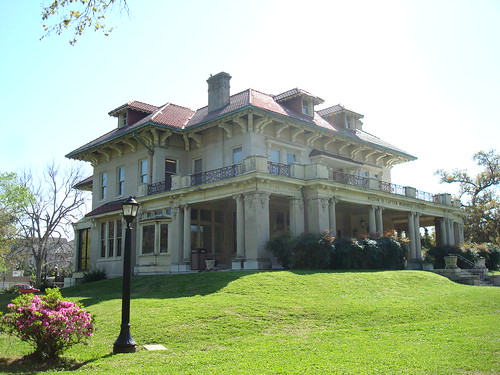
this is my mom and a beignet. the new orleans version of a donut. divine.

this is an alligator.

as is this. apparently, the zoo used to have (still has?) a number of white alligators, though the only one we saw was a life-size model in a tank. and this handsome fellow, of course.

the cornstalk fence. there are only two in the city, one a few blocks from my aunt's home, and this one, at what is now a bed and breakfast.
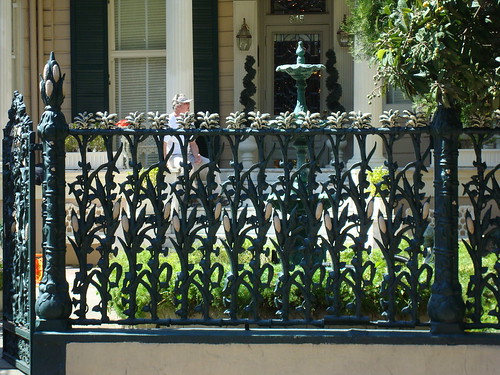
i wish i had photos of my aunt's home, but sadly, i forgot. this is her dog, though. Gizmo. who liked to eat my feet.

ps the guatemala project is done and turned in and not to be talked about any more.
Thursday, March 20, 2008
springtime....
is it strange that the messing up of this schedule in my dream last night upset me so much? that i found myself sitting on the curb outside because it didn't work? the dream was odd enough as it was - rita and i were sharing two apartments in arcata, one that only had one bedroom, so i was sleeping at another apartment where we only had use of the bedroom. that was what messed up the morning schedule. all my things were at the shared apartment on the hsu side of the freeway, but waking up at the other, which was near the plaza, sent me for a loop. and then nancy diamond showed up to ask me about dorae's harp lessons and jody showed up to get me to help corral the children in teh back yard to avoid the floating surfboards and keep them away from the giant strawberries. overall, terribly disconcerting. and, throughout the dream, i kept thinking that had i had my tea, granola, and npr, it would have all been fine.
speaking of npr, i still listen to my hometown station rather than the chicago station, whenever possible. obviously, morning edition happens two hours later there than here, meaning when i wake up at 9, i can still catch most of the show. it's perfect. i also get to hear the community calendar and long for my small town joys... annual plant sale, concerts, craft fairs... somehow i'll find that community sense wherever i end up. i hope.
Happy Spring!
Wednesday, March 19, 2008
Tuesday, March 18, 2008
Monday, March 17, 2008
consuming

a wonderful twist on the boarding school bildungsroman/mystery. Blue's father is a wandering professor who agrees that for her final year of high school, perhaps they should stay in one town for the entire year. Blue finds herself in the sway of the film teacher, Hannah Schnieder, and the clique of startling misfits she has gathered around her... only to have Hannah mysteriously commit suicide, opening up a whole new perspective on Blue's life. Liberally sprinkled with quotations for authors real and fictional, illustrated by Blue, and deliciously quirky and twisted.
A very pretty webpage for the book...
A few things by Ann Patchett

An attempt to kidnap the president of a poor, unnamed Andean country from a birthday party for a prospective Japanese investor goes awry when the president is not in attendance, home instead with his soap opera. Forced into quick decisions, the rebels/terrorists take the entire party, including the opera star who drew them all there, hostage. Romance blooms across languages and backgrounds as they all tumble into a prolonged period of suspended animation. I had read this before and been disappointed by the ending... still was, to a degree, but less so. Maybe it just required knowing the characters a little better.
and

this time we're in boston, following the lives of an ex-mayor, his run-away biological son and the two brothers he later adopted, and the family they never knew they had. wound through with politics, science, history, and poetry - father had wanted them all to be president and had them memorize important speeches as children - Run is about race and passions and responsibility. it's also a wonderful portrait of boston, which i miss.
Ann Patchett's writing leaves me breathless. occasionally crossing into magical realism, she is poignant and fast paced, and i can never put her books down. She has such an obvious love of the world around her and an amazing eye/ear/touch for sensory and emotional detail...
also, this, which i enjoyed so much more than the movie
various children's books (robin mckinley, harry potter)
and

which i did not like so much, though i pushed through and finished it... her V.I. Warshawski mysteries are fun, but this was just a little too strange, polarized and upsetting... there were no shades of gray in this book, which i always find unsettling. despite taking me to parts of chicago i have yet to explore, i was not terribly fond of it...
now reading
 which i'm enjoying tremendously, though i don't know that it will be the best pre-bedtime book....
which i'm enjoying tremendously, though i don't know that it will be the best pre-bedtime book....and looking forward to spring break when i can spend much time curled up in my aunt's home/on the plane/in my bed with new ones... recommendations welcome!
